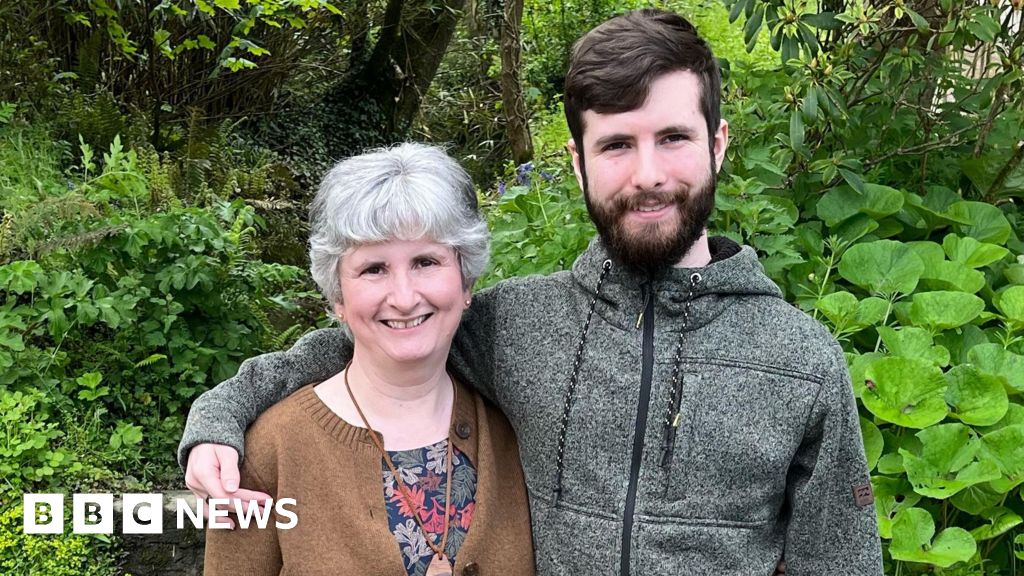ARTICLE AD BOX
By Noor Nanji
Business reporter, BBC News
 Image source, Getty Images
Image source, Getty Images
The price cap is expected to go up again in October
Typical domestic energy bills could hit more than £3,600 a year this winter, according to a new forecast.
Consultancy Cornwall Insight said the typical gas and electricity bill in England, Wales and Scotland could reach £3,615 in the new year - hundreds of pounds more than previous predictions.
The government has announced a package of measures to help households with the rising cost of living.
However, some have called for more support for families.
The average energy bill was £1,400 a year in October 2021. The last energy price cap increase, in April 2022, saw that rise to £2,000.
The price cap - the maximum amount suppliers can charge customers in England, Scotland and Wales - is expected to go up again in October.
Cornwall Insight told BBC Breakfast that the typical domestic customer was likely to pay £3,358 a year from October, then £3,615 a year from January.
That is much higher than earlier predictions. Last month, Cornwall Insight said a typical bill would reach £3,244 a year from October, and £3,363 a year from January.
'Little sign of abating'
Dr Craig Lowrey, principal consultant at Cornwall Insight, said rising wholesale gas prices and concerns over Russian supply were behind the big leap.
"However, while the rise in forecasts for October and January is a pressing concern, it is not only the level - but the duration - of the rises that makes these new forecasts so devastating," he said.
"Given the current level of the wholesale price, this level of household energy bills currently shows little sign of abating into 2024.
"While the government has pledged some support for October's energy rise, our cap forecast has increased by over £500 since the funding was proposed, and the truth is the £400 pledged will only scratch the surface of this problem."
In May, energy regulator Ofgem said the typical household should expect to see an £800 increase in October, to £2,800 a year.
Last month, BFY, a management consultancy, predicted a typical energy bill could hit £3,850 a year by January.
The energy price cap sets a limit on the amount that can be paid for each unit of energy.
It is based on the price energy suppliers pay producers for electricity and gas.
This has risen sharply, fuelled by the war in Ukraine which has threatened supplies from Russia.
Many families are already facing soaring costs, with UK inflation - the rate at which prices are rising - at the highest in 40 years.
Last week, personal finance expert Martin Lewis said people would be "panicking" over their energy bills, and warned it would "be desperate" when bills rise this winter.
"It's going to throw many households into a terribly difficult financial situation," he told the BBC.
Mr Lewis said that more needed to be done now to help the poorest households.
£400 energy payment
A spokesperson from the Department for Business, Energy and Industrial Strategy said: "While no government can control global gas prices, we are providing £37bn of help for households including the £400 discount on energy bills, and £1,200 of direct support for the most vulnerable households to help with the cost of living."
Last week, the government announced how households in England, Scotland and Wales will receive that £400 to help with rising fuel bills this autumn.
The money, part of the Energy Bill Support Scheme, will be paid in six instalments.
Households will see a discount of £66 applied to their energy bills in October and November, and £67 a month from December to March 2023.
But how the money is received will depend on how you pay your bill.
Image source, Getty Images
Other measures include a £650 payment to more than eight million low-income households.
The first instalment of payments to those on benefits started being made from 14 July.

 2 years ago
68
2 years ago
68








 English (US) ·
English (US) ·